Utility bills are growing every year. Special metering devices - water, gas and electricity meters - help to save money on them. Another way to avoid overpaying utilities is to install a wastewater meter. High-tech product provides high measurement accuracy.
Definition, scope of equipment
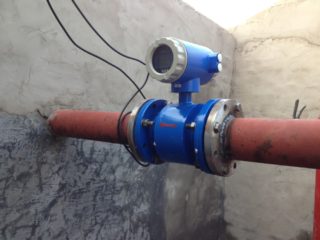
A flow meter is a device designed to accurately calculate the volume of waste water passing through it. Depending on the type of device, it is used in the following areas:
- sewage metering at municipal and private facilities;
- calculation of pure water consumption;
- monitoring the filling of sewer networks;
- industrial sector to account for the volume of discharged effluents.
Sewer meters are equally intensively used for pressure and non-pressure pipelines.
Types of metering devices
All flow meters are divided into types according to the type of their device and the principle of operation. Each of them is most relevant for use in specific conditions.
Ultrasonic
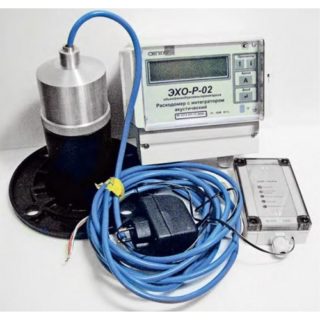
This type of device is used only for gravity free-flow lines. The principle of operation of such a device is based on a built-in sensor, which reads the volume of passing waste water using the area-velocity method. That is, it determines the depth of the stream and the speed of its movement. The sensor is installed directly into the transported medium. The ultrasonic wastewater flow meter has the following advantages:
- good amount of memory (preservation of previous data);
- the ability to install on pipes of different diameters from the smallest to a cross-section of 350 cm and more;
- the minimum percentage of errors in the calculation (0.1%);
- operation of the device from batteries or from a 220 W network;
- service life up to 10 years (with the need for verification every 4 years);
- the ability to take readings remotely;
- Russian-language interface.
Allocate mortise ultrasonic metering devices and invoices. The latter are intended for installation in pressure systems as well. To take readings from such devices, you can use a wireless modem or regular cable connection.
Lever-pendulum
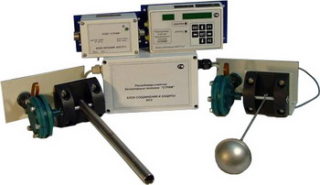
The device works according to the following principle:
- The lever in the device is equipped with a float. When the flow of water moves, they measure the depth of the flow of wastewater (filling level of the pipe). If the volume of contaminated media in the channel increases, the float rises and thus raises the device lever. A decrease in the flow depth leads to a reverse movement of the working elements. It is the angle of inclination of the lever that shows the depth of the wastewater.
- The flow velocity is measured by a rotary vane specially built into the flowmeter. It also displays readings on the angle of its inclination.
Lever-pendulum metering devices are used in open channels and full-fledged pipelines. They can be used even for very polluted waters.
Electromagnetic
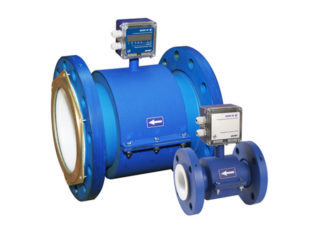
Such wastewater metering devices are used in gravity and pressure pipelines. But provided that the optimal working pressure in the last manifolds does not exceed 40 bar. The principle of operation of these types of meters is based on the use of magnetic induction.Here the flux itself acts as a movable core that passes through the magnetic coil.
Electromagnetic devices can be used to measure the volume of wastewater and clean water.
The advantages of this type of apparatus:
- simple installation and operation;
- high reliability rates;
- vibration resistance;
- accuracy of measurements;
- permissible temperature limit of effluent or water +80 degrees;
- elimination of pressure loss.
Electromagnetic flowmeters are several times cheaper than previous ultrasonic and lever-pendulum devices.
How to choose a counter for drains
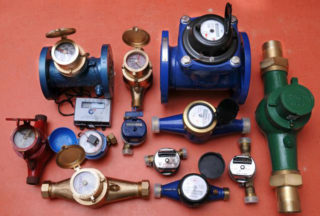
The main criteria for buying a flow meter:
- maximum temperature indicators of effluents;
- type of measured liquids (clean or dirty water);
- range of effluent flow for a specific device model;
- section of a pipe or channel;
- the material from which the highway is made;
- the maximum allowable working pressure across the manifold;
- the ability to narrow the pipe.
Also, experts advise you to listen to these recommendations:
- It is better to install electromagnetic or ultrasonic meters on waste water. For clean water - lever-pendulum.
- When installing an ultrasonic device, an extended straight section of the line is required. Keep this in mind when purchasing equipment.
- It is advisable to abandon the ultrasonic meter with attachment sensors. They are less whimsical in installation, but at the same time they are distinguished by low accuracy of readings.
- For pressure systems, it is better to choose electromagnetic meters.
Using these recommendations, the master can buy and install the optimal flow meter for his conditions.
Installation features
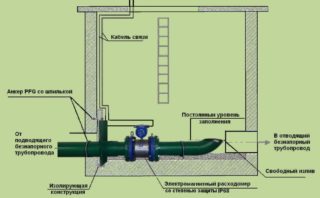
To obtain the most accurate readings, you should follow the rules for installing meters.
- Legislation only allows devices to be installed on long, straight sections of pipelines.
- The installation of the device in free-flow lines must be carried out on its understated sections. At the same time, do not install the flow meter at the bottom of the pipeline if its drains are discharged from a height precisely at this point and first enter the atmosphere.
When installing the meter on a free-flow gravity sewer, it is important to remember that the filling of the pipe and the flow rate are constantly changing here.
Possible errors in calculations
It is not uncommon for the installed mechanism to show several times less or more water being discharged than is supplied to the object. A priori, this cannot be. Therefore, it is worth looking for the reasons for the inaccuracies.
- Incorrect location of the flow meter in the manifold - its installation without taking into account third-party tie-ins into the pipeline. The equipment is located after the location of another outlet for discharging drains into the general network.
- Breakdowns in the pipeline in front of the flowmeter location. As a result, groundwater gets into the collection unit, which increases the volume of waste.
- Incorrect determination of the water balance for the object. For example, the master can only calculate the ratio of the incoming cold water and the formation of effluents. But they also include DHW resources.
- Malfunctions of the equipment itself (sensors, levers, blades, coils).
To avoid serious errors in the readings of the meter, its installation must be carried out in strict compliance with the above rules.








